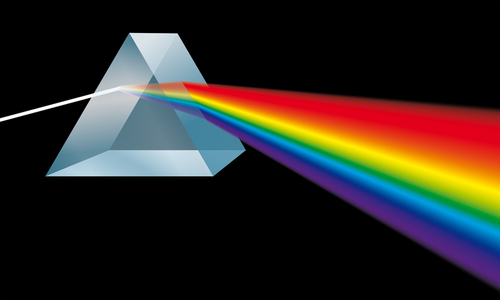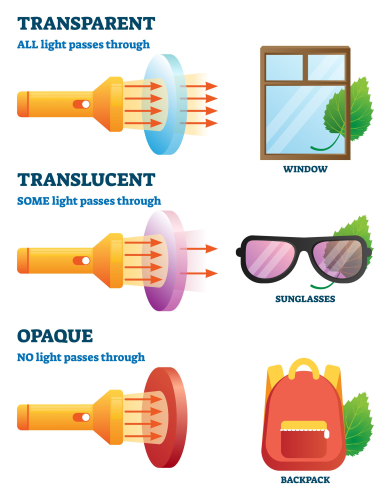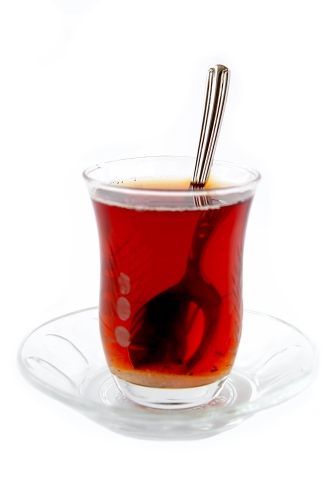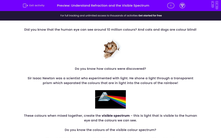Did you know that the human eye can see around 10 million colours? And cats and dogs are colour blind!

Do you know how colours were discovered?
Sir Isaac Newton was a scientist who experimented with light. He shone a light through a transparent prism which separated the colours that are in light into the colours of the rainbow!

These colours when mixed together, create the visible spectrum - this is light that is visible to the human eye and the colours we can see.
Do you know the colours of the visible colour spectrum?
You might think that you don't, but it's actually just the colours of the rainbow!
Red
Orange
Yellow
Green
Blue
Indigo
Violet.
There are lots of ways to remember these colours, one way is a mnemonic device - using different words that start with the same letter to help us remember something, like this:
Richard Of York Gave Battle In Vain
You could try making up your own!
A prism is a solid 3D shape with flat sides. The ends need to be equal shape and size to separate out the visible light into all the colours of the spectrum.
Transparent means all light can pass through it.

When light shines through water or a prism, it actually bends as it travels through air into water or a solid.
Have you ever noticed a spoon or straw looking bent inside a glass of water?

This is because the light bends when it travels through water and this is called refraction.
This is different to reflection which is when light bounces off different objects - it does not travel through.
In this activity, we will be looking at these scientific words and thinking about how refraction changes the path of light rays and beams.








